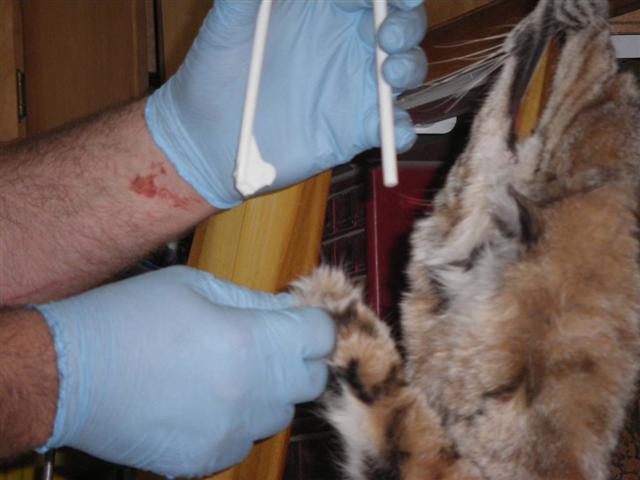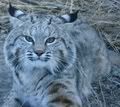Your cat skin should now be free from the carcass.
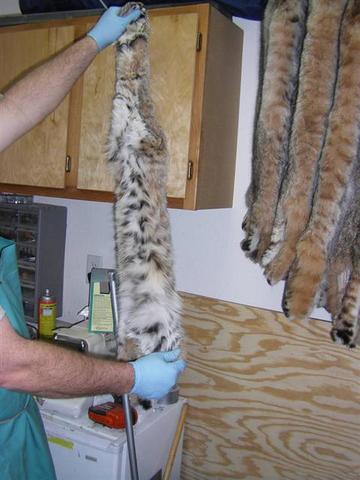
With the fur free from the carcass, I first insert my tail zipper and split the tail clear to the tip, and then pack in Borax to keep it from spoiling.
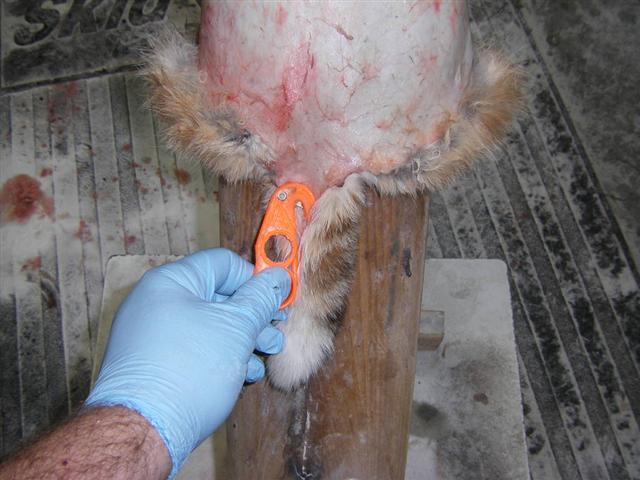
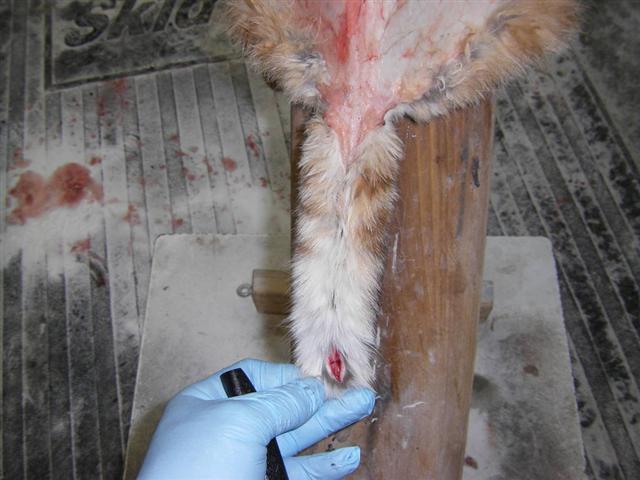
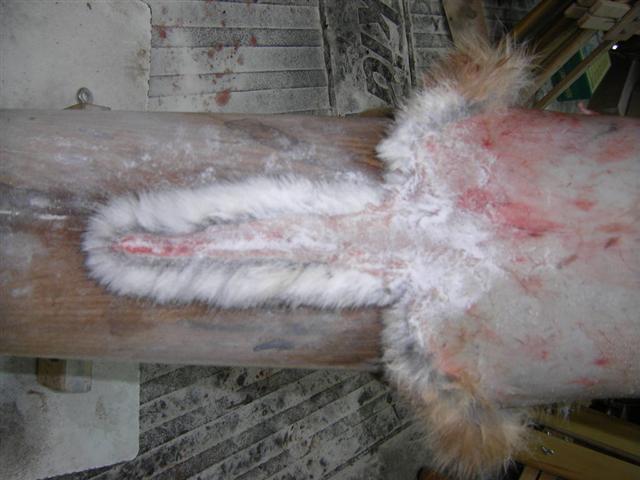
Trim all the meat from the base of the ears.
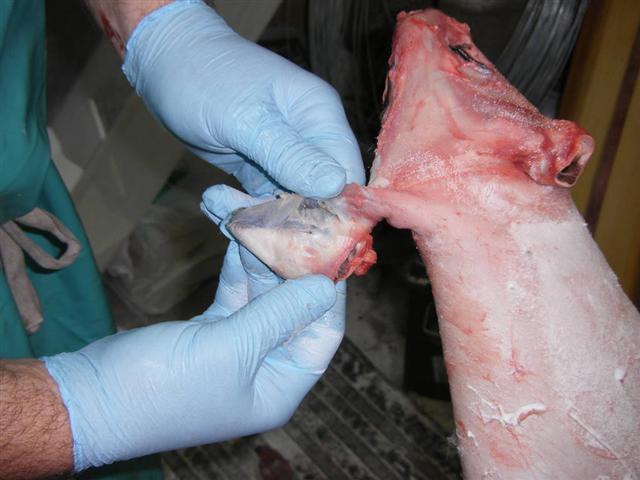
Flesh and trim all the fat from the cat. Pay particular attention to the base of the hide, down near the tail.
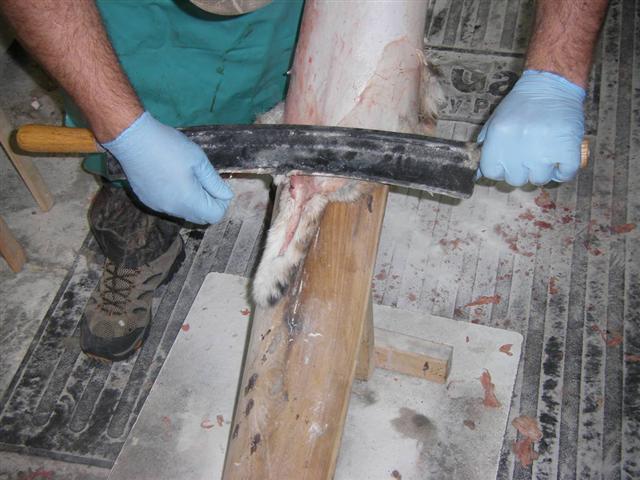
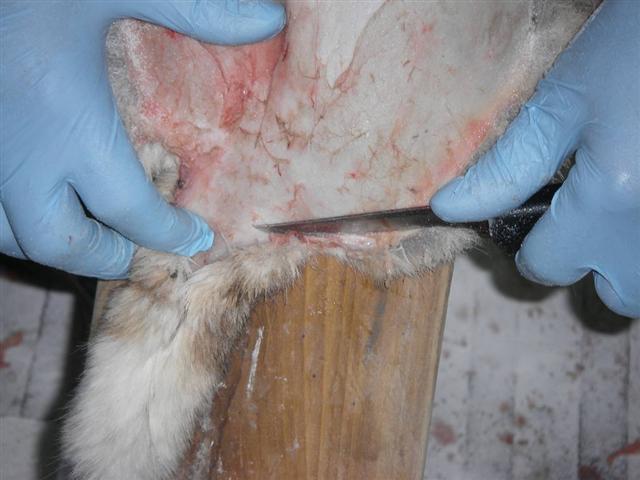
Incidently, Mercer Lawing did a good DVD a few years back about putting up cats. Can't remember the name of it right now but maybe he can chime in and give you more info on it. Well worth the money and you'll make the money back you spent on the DVD with the first good cat you sell.
Despite my best efforts, I sometimes make a hole. Here's how I patch them up. I usually use white dental floss, but I used black thread for photography purposes. First, thread your needle, and then double the length of the thread. Then run the needle in one side of the hole, across the hole, and out the other side. Be careful not to gather any hair in your stich.
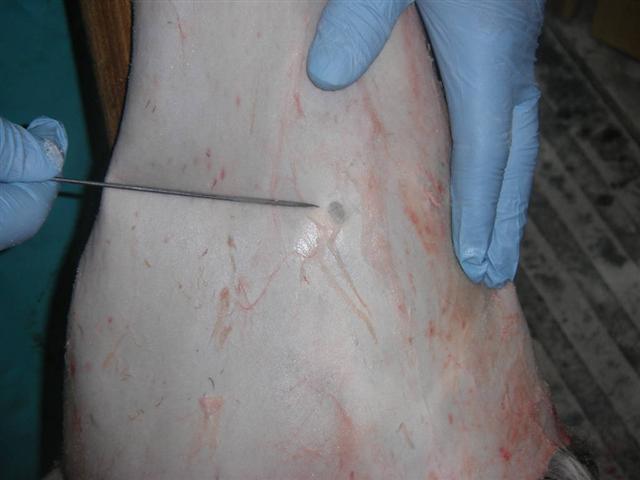
Then come back through your stitch and run the needle through the loop that you created in the first part of the stitch.
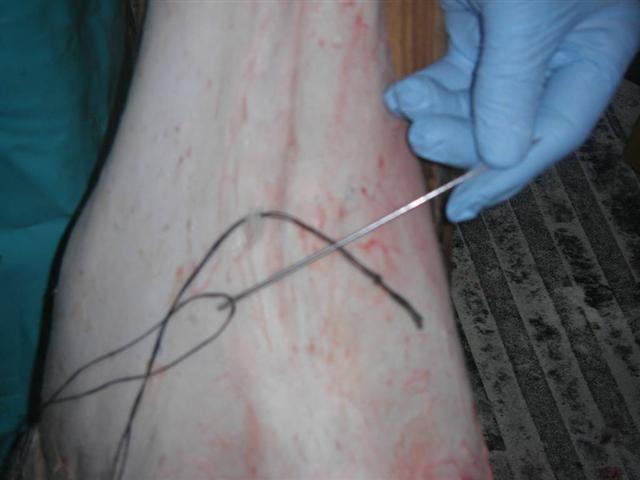
Pull the thread tight and you should have a nice knot that won't unravel. Repeat the process each time you make a complete stitch. (Sorry for the blurry photos)
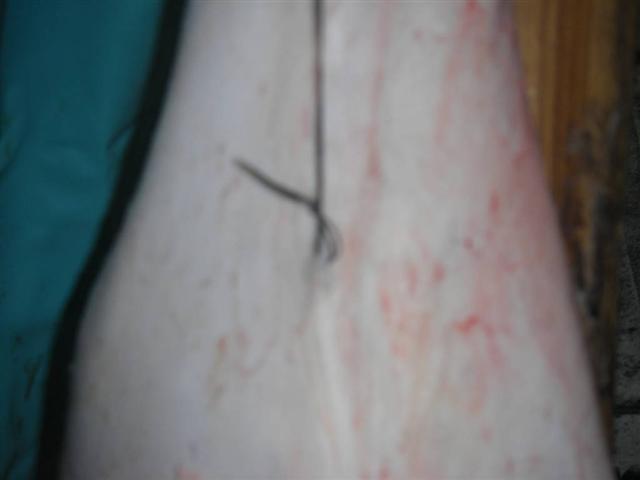
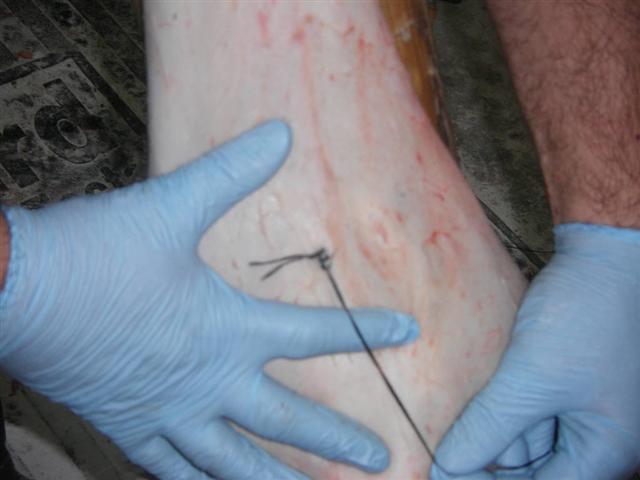
Now tie off the two ends at the end of your stitch, and trim.
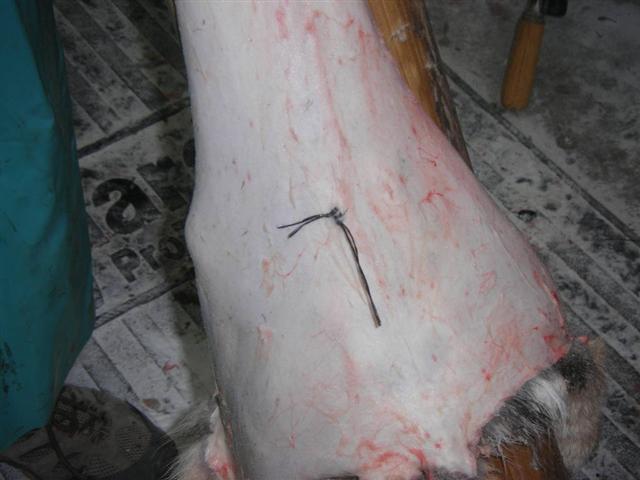
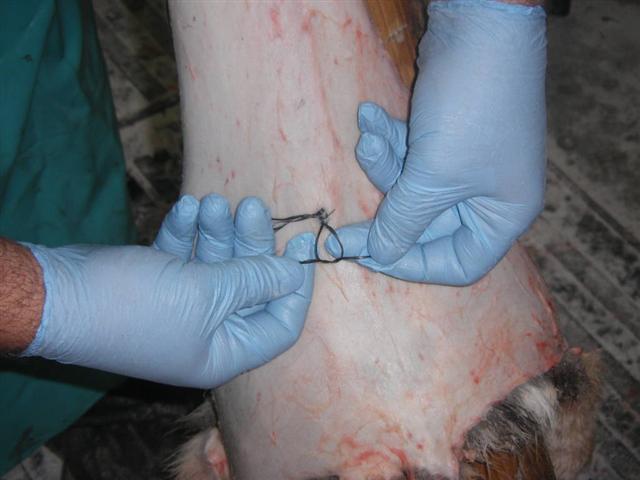
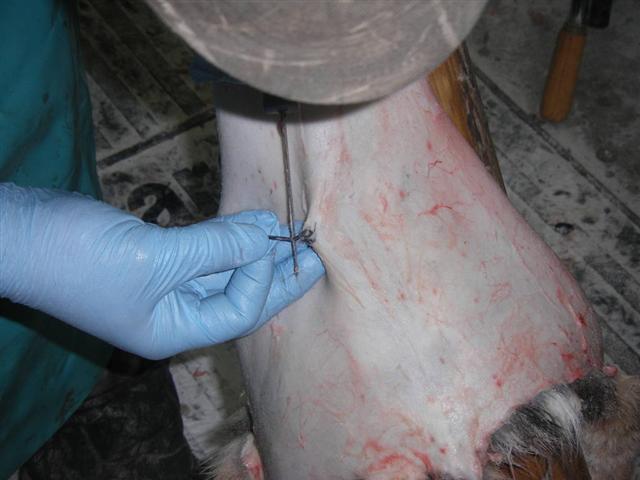
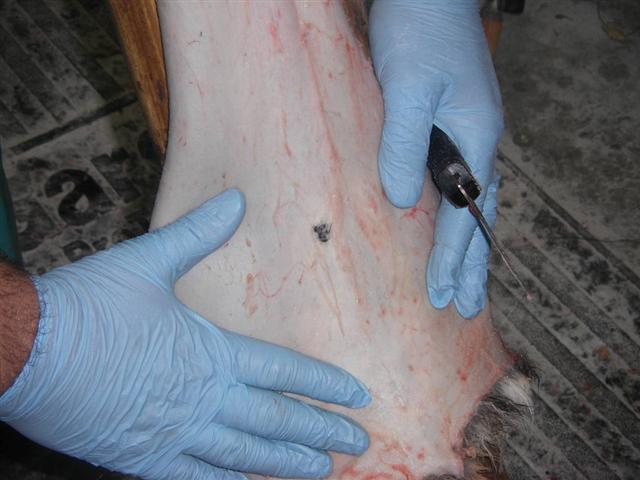
Now slide the cat on your stretcher.
DISCLAIMER!!!! I don't put my cats on skin side out, then turn them. Rather, I put them on fur side out from the get go. I realize this might not work for all climate conditions and I will not be responsible for any lost, damaged, spoiled, soiled, slipping cats that may result if you try it this way and it doesn't work for you. I've never lost a cat this way, it works fine for me, and I'm not changing, so there.
One advantage of starting out with the fur side out is that you can properly orient the fur to the stretcher -- in other words, get it on straight so you can see that dark backbone line running straight down the middle of the stretcher.
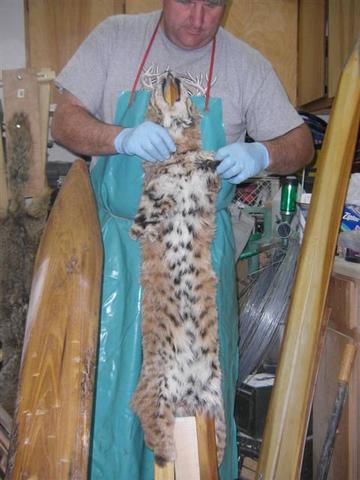
I only use wood stretchers. I know, some use wire. Wire is fine for you, not for me. If you want to keep using wire, skip the rest of this post and go directly to the inevitable negative comments that will follow it and start piling on as soon as you can. In my humble opinion, a cat on a wire stretcher is just wrong. Wrong like body piercings in any part of your body other than a woman's ear lobes is wrong. Wrong in the same fashion that a playing card stuck in the spokes of a Harley would be wrong. Wrong in the same sense that hunting whitetail with a Wristrocket is just wrong. Keep using wire if you want, but don't whine about how your cats look if you do. And if you're going to use wood, get good stretchers. Not all wood stretchers are created equal. Contact Otis Latham on here, he goes by Coloradocat. He makes cat stretchers with the right dimensions and shapes.
Whooo, where was I? Oh, ya, put the cat on the stretcher and pull the belly down as far as you can without pulling a hamstring. Don't over pull to try and get more length (especially on the belly -- no fur buyer measures the belly, they measure the back to the base of the tail). Pin the center of the belly here.
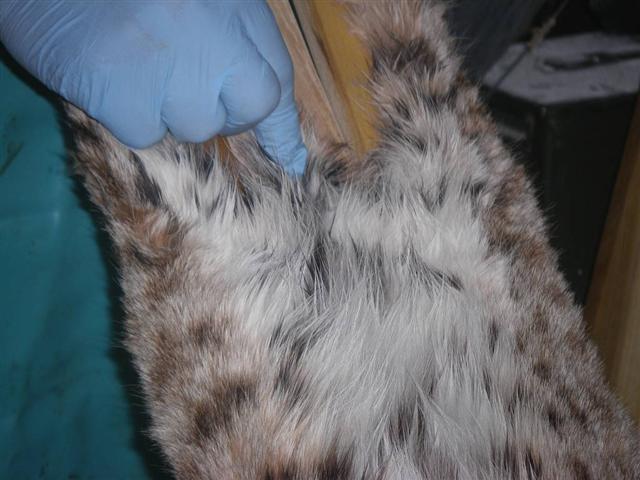
Now pull down on each leg and pin it.
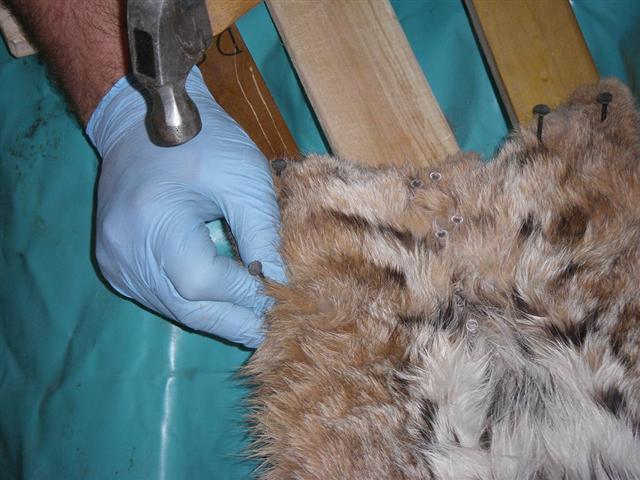
Flip the cat over and pull down on the base of the tail. This is where it pays to get all the length you can, but don't overdo it. Just pull enough to take all the slack out of the cat and then pin at the base of the tail. Then pin at the end of the tail.
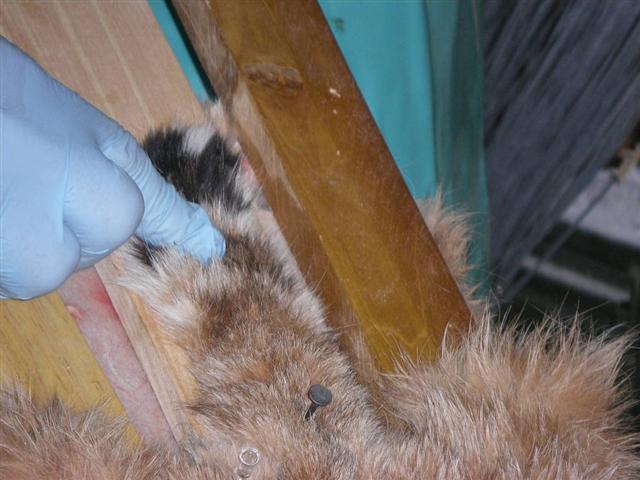
Flip the cat back over to work on the belly. Starting as far forward of the belly as you can, pull each side of the inside flank/belly to the center board and pin it in the center of the board. Work from side to side, pulling the inside flank/belly skin to the center and pin it, then go to the other side and repeat. The idea is that you want to pull all the belly skin from the insides of the back legs to the center board and pin it there so it appears that the belly skin goes all the way to the back feet. (See last photo)
Now pull the front legs up, and insert something into the front leg "tubes" to keep them from spoiling as the fur dries. I cut plastic hangers (the large diameter size) in half and use those. Then pin the inside skin against the chin area to keep the legs secure in the forward position.
